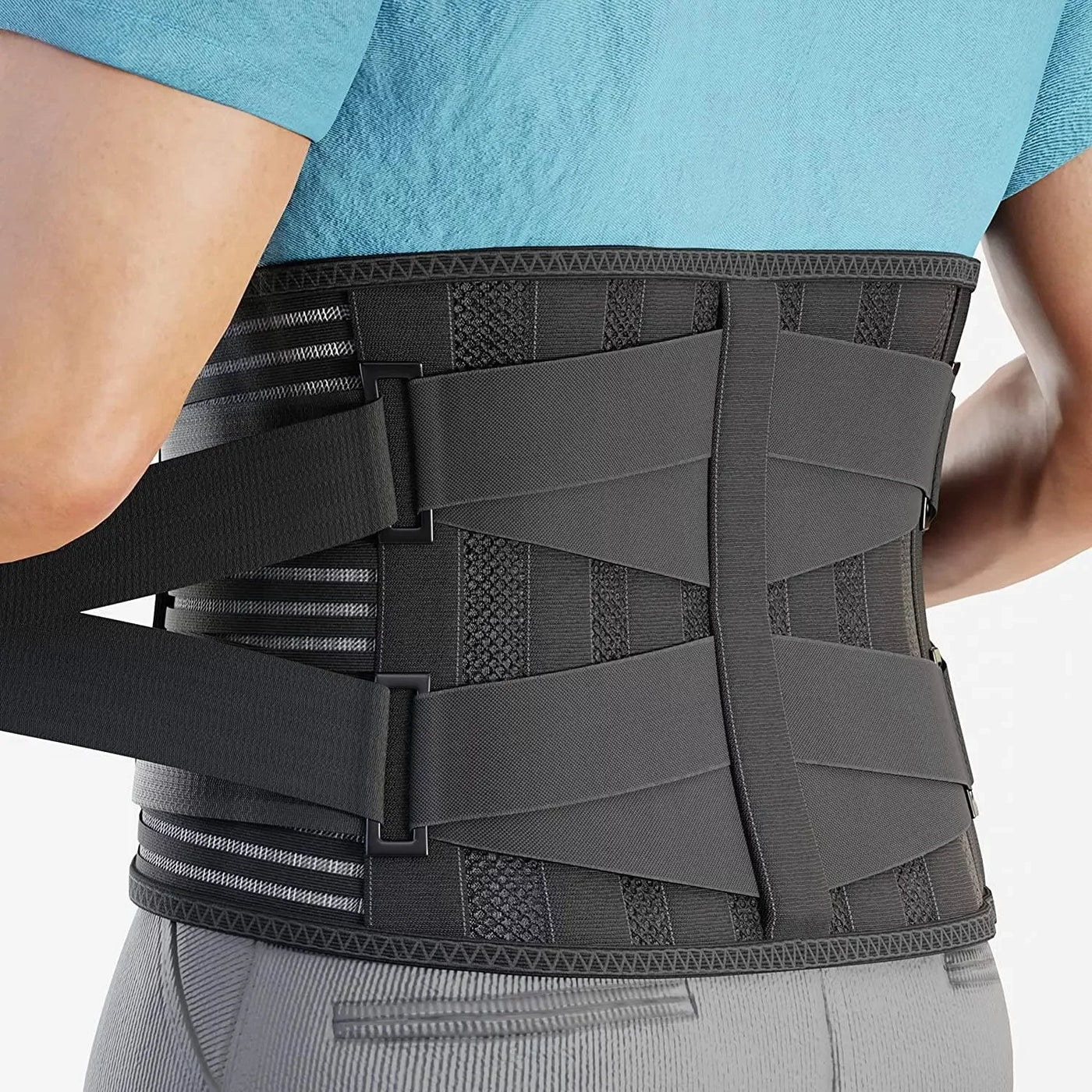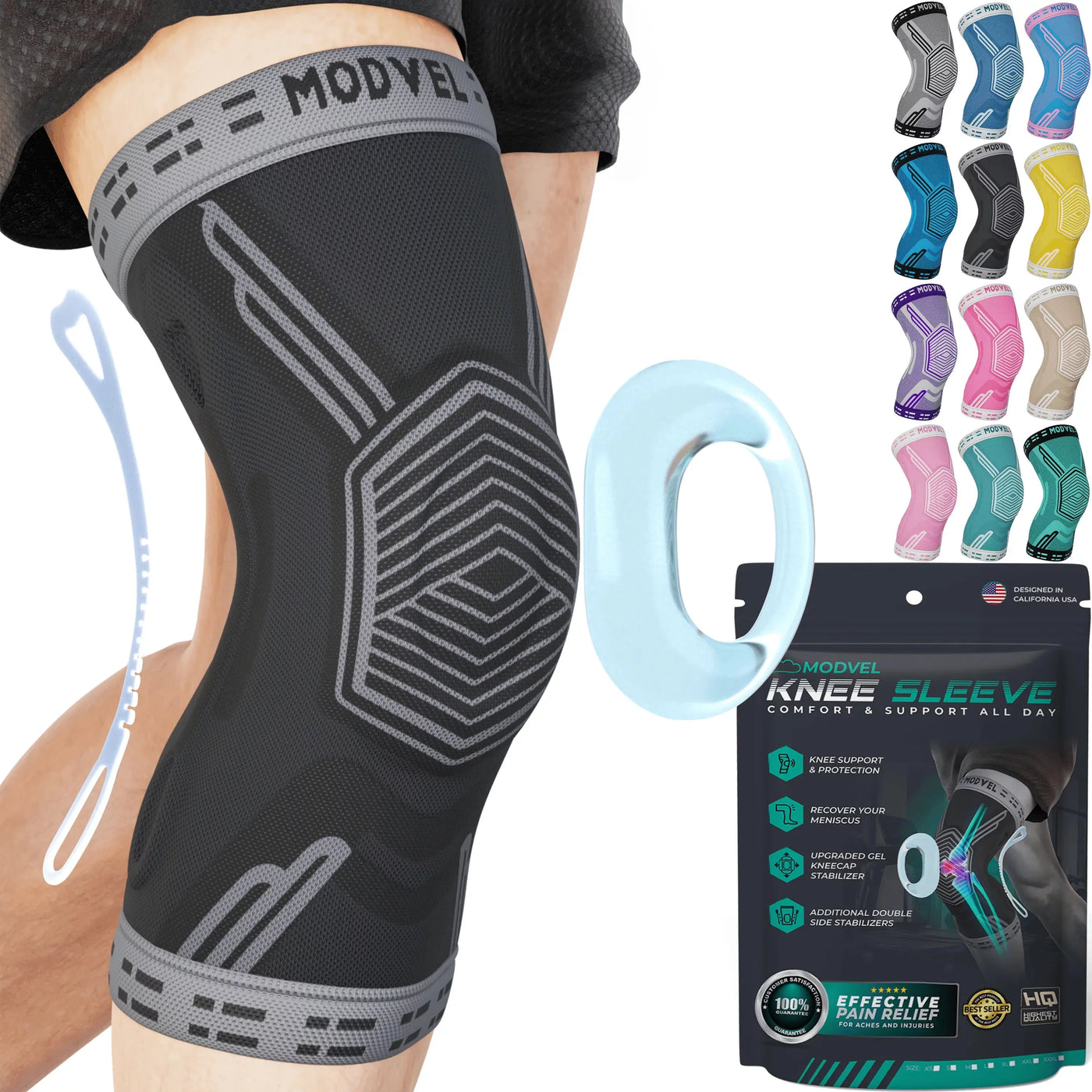Introduction:
Chronic muscle pain can be an enduring challenge, persisting for years despite conventional approaches like stretches, strengthening exercises, massages, injections, and even surgeries. In this blog post, we'll explore why these mainstream theories might not provide lasting relief and introduce an alternative perspective that delves into the intricate connections between the body, mind, emotions, and life experiences.
The Misconception of Mainstream Approaches:
The core issue with mainstream theories is their focus on treating muscular pain as solely a physical problem, overlooking the complex interplay between muscles, the nervous system, the brain, emotions, and one's overall existence. Stretching, massages, and other physical interventions may offer temporary relief, but they fail to address the deeper emotional and mental components contributing to persistent muscle tension and pain.
MODVEL Lower Back Brace with 6 Stays for Lower Back Pain Relief | Lumbar Support Belt
Understanding the Mind-Body Connection:
Every conflict in life, whether physical, emotional, or mental, has a muscular tension component. Muscles are closely tied to our actions, and conflicts often result in a protective response that manifests as muscle tension. This connection underscores the inadequacy of purely physical interventions in resolving chronic muscle pain.
The Limitations of One-Dimensional Approaches:
Traditional approaches fall into two categories – purely physical interventions like physiotherapy, exercises, injections, and surgeries, and therapy-based approaches acknowledging emotional and mental components. However, neither approach provides a comprehensive solution, as they either focus solely on the physical or abstract mental aspects, neglecting the holistic nature of the problem.
Holistic Approach to Resolve Muscular Pain:
The key to addressing chronic muscle pain lies in a holistic approach that simultaneously considers the physical, mental, emotional, and spiritual dimensions. An emerging concept known as conscious movement integrates these elements, offering a path to trigger the release of emotional and mental conflicts stored in muscles.
Conscious Movement: A Holistic Solution:
Conscious movement involves performing specific exercises while maintaining a heightened awareness of the body, mind, and emotions. Unlike unconscious movements like simple stretches, conscious movement requires being fully present in the moment, observing thoughts, emotions, and muscle responses. This approach aims to uncover and release deep-seated conflicts contributing to chronic muscle pain.
A Practical Exercise:
To provide a glimpse into conscious movement, a simple punching exercise is introduced. This exercise involves punching with alternating hands, encouraging the engagement of the shoulder girdle, chest muscles, and scapula. The practitioner is urged to observe their physical sensations, emotions, and thoughts during the exercise, revealing potential connections to past conflicts.
In-Depth Healing with Conscious Movement Courses:
For those seeking more structured guidance, the blog recommends two courses – one for back pain and another for neck pain. These courses, developed by the author, delve into conscious movement techniques specifically designed to release tensions associated with these areas. The back pain course is highlighted as particularly crucial due to its central role in the body's tension patterns.
Conclusion:
Chronic muscle pain requires a nuanced and holistic approach that acknowledges the intricate relationships between the physical, mental, emotional, and spiritual aspects of our being. Conscious movement offers a promising avenue for those seeking lasting relief by addressing the root causes of persistent muscular tension and pain. Embracing this holistic perspective may be the key to finally breaking free from the shackles of chronic muscle pain.





